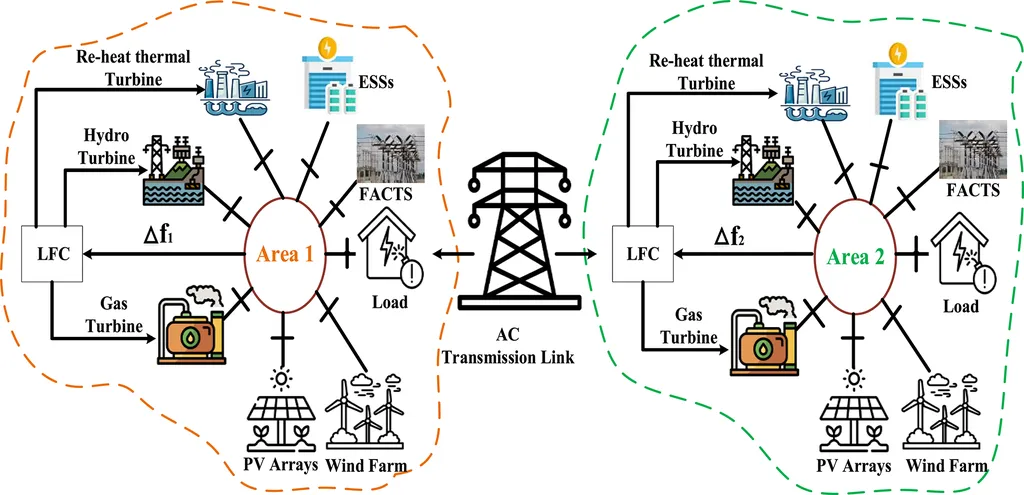In the rapidly evolving energy landscape, the integration of renewable sources into power systems presents both opportunities and challenges. A recent study published in *e-Prime: Advances in Electrical Engineering, Electronics and Energy* offers a promising solution to one of the most pressing issues: frequency regulation in renewable-rich power systems. Led by Anil Annamraju from the Department of Electrical and Electronics Engineering at VNR Vignana Jyothi Institute of Engineering & Technology in Hyderabad, India, the research introduces a novel control strategy that could significantly enhance the stability and efficiency of modern power grids.
The study addresses a critical problem: the rapid power imbalances caused by the intermittent nature of renewable energy sources, combined with uncertainties in load disturbances and system inertia. These imbalances can lead to significant frequency deviations, affecting the stability of the entire power system. Traditional Proportional-Integral-Derivative (PID) controllers, while widely used, may not fully address the dynamic needs of today’s complex power grids. “PID controllers have a solid foundation and are relatively easy to implement; however, they may not fully address the dynamic needs of today’s power grids,” Annamraju explains.
To tackle this challenge, Annamraju and his team developed the Tilt Multistage PID controller with filter (TMSPIDF). This advanced controller combines the benefits of multistage, tilt, and PID controllers within a single framework, aiming to handle uncertainties more effectively across various operating scenarios. The performance of the TMSPIDF controller is optimized using the Electric Eel Foraging Optimization (EEO) algorithm, which fine-tunes the controller’s parameters for optimal performance.
The results are impressive. In tests conducted with up to 40% renewable penetration, the TMSPIDF controller reduced frequency error by 62% and 39% and settling times by 75% and 40% compared to traditional TPIDF and PIDF controllers, respectively. Moreover, the proposed controller demonstrated superior performance in the face of parametric and system uncertainties.
The implications for the energy sector are substantial. As renewable energy sources continue to play a larger role in power generation, ensuring the stability and reliability of the grid becomes paramount. The TMSPIDF controller offers a robust solution that can enhance the integration of renewables, reduce frequency deviations, and improve overall system stability. This could lead to more efficient and reliable power systems, benefiting both energy providers and consumers.
Annamraju’s research not only advances the field of frequency regulation but also highlights the potential of advanced control strategies in addressing the complexities of modern power systems. As the energy sector continues to evolve, such innovations will be crucial in shaping a more sustainable and resilient energy future.
The study, published in the journal *e-Prime: Advances in Electrical Engineering, Electronics and Energy*, represents a significant step forward in the quest for more stable and efficient power systems. As the world moves towards a renewable-rich energy landscape, the insights and innovations from this research will undoubtedly play a pivotal role in shaping the future of energy regulation and management.

